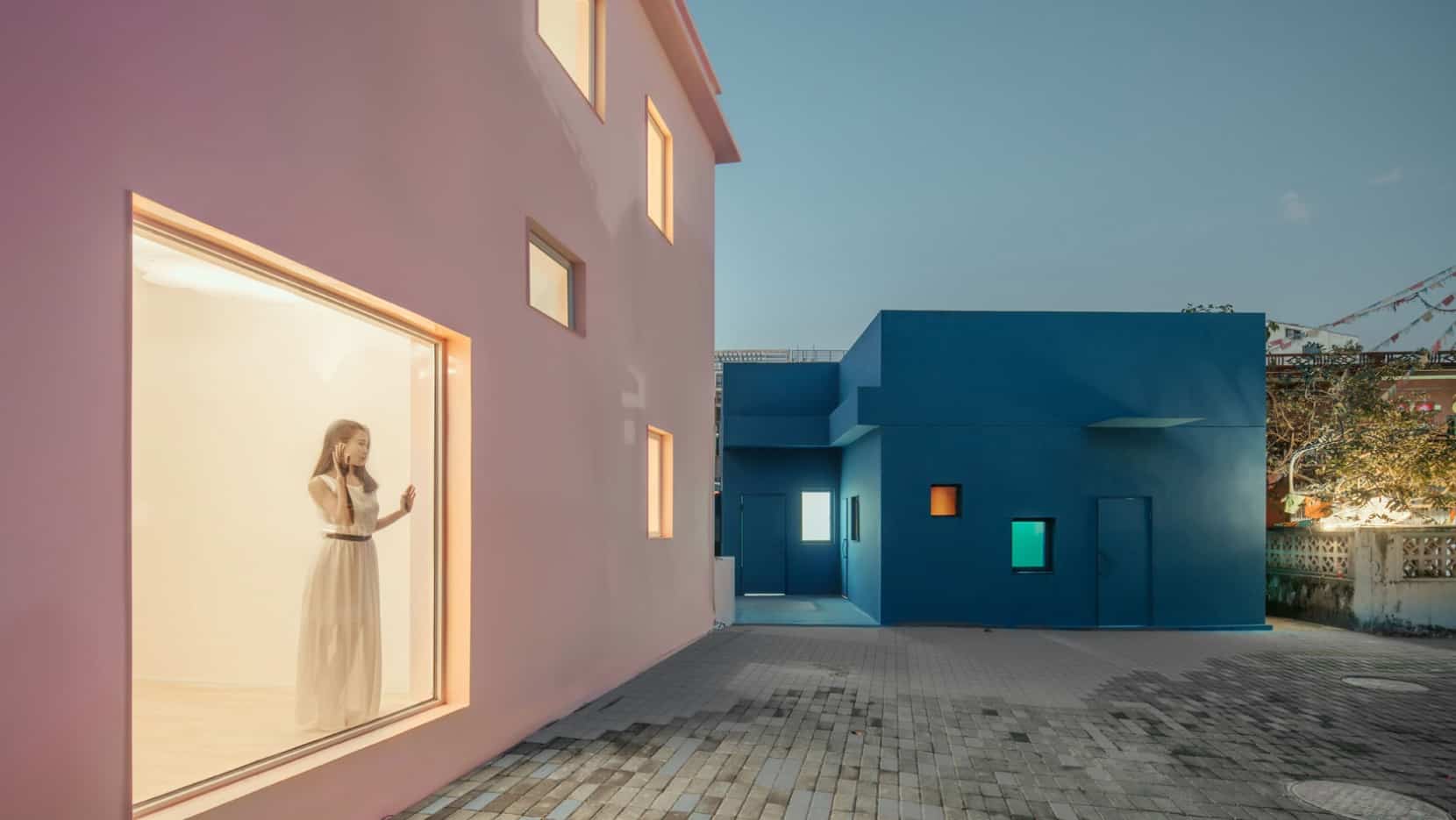Part of this seventh Shenzhen-Hong Kong Bi-City Biennale of Urbanism/Architecture that started in December of last year, His home and Her House, is a conceptual installation by Shanghai-based architectural agency Wutopia Lab that has changed two little buildings in an urban slum of Shenzhen to a conversation about the contrasting roles of women and men in the kitchen and the way this can be reflected in dietary habits. Using blue as an allusion to the masculine traits of perseverance and crudeness, and crimson for the feminine virtues of sensitivity and refinement, the job is also a playful metaphor for the complementary forces which urban electricity rejuvenation.

With this Biennale, a decision was taken to integrate all of the exhibits into urban villages– poverty-stricken urban neighborhoods, growing independently from the city and supplying a low-cost living for migrant laborers and new arrivals. At Dameisha Village, five design studios, including Wutopia Lab, were invited to re-interpret the idea of the village kitchen as a place of urban symbiosis through the renovation of ten structures.
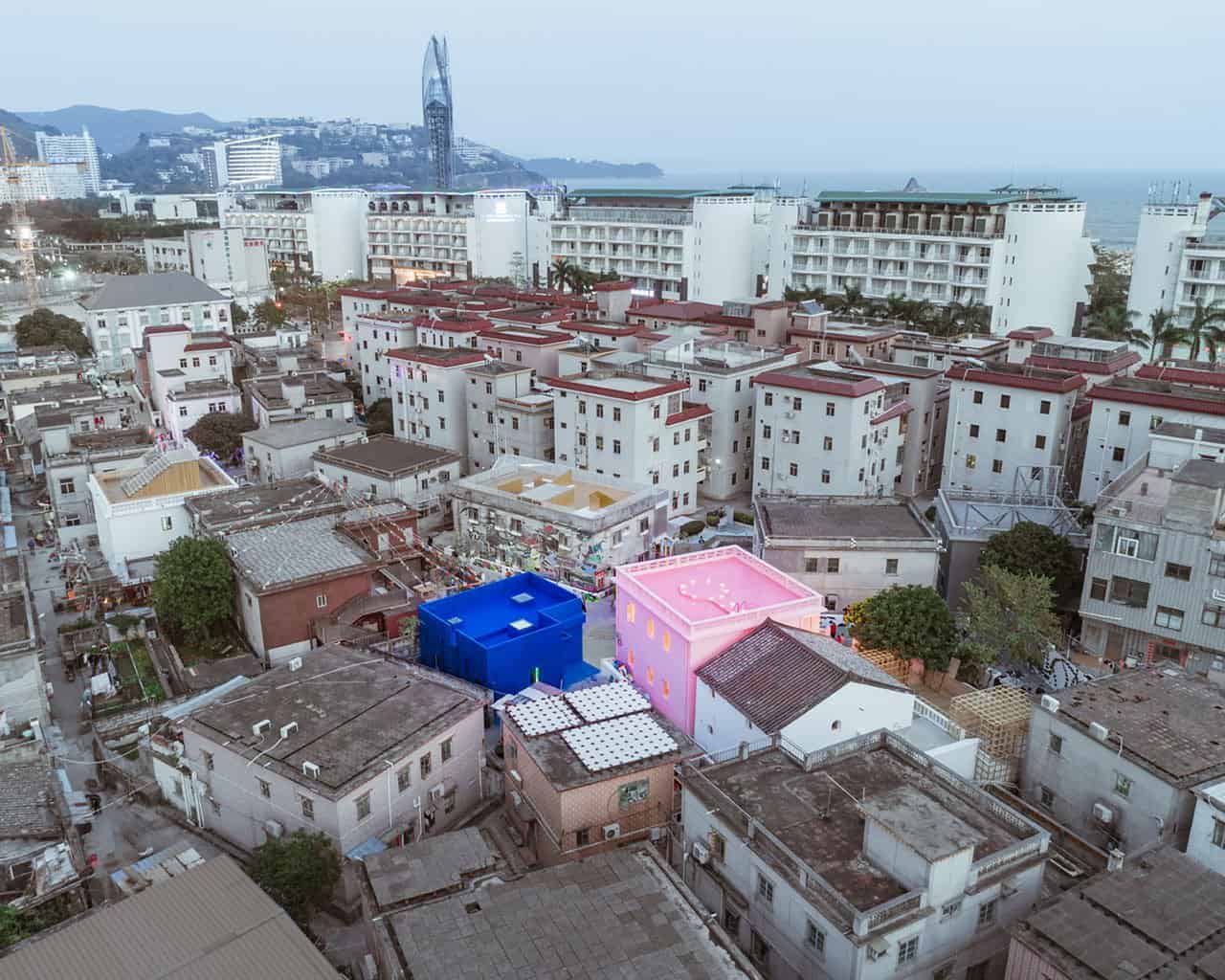
Wutopi Lab’s approach is focused on the roles that men and women are culturally assigned to in the kitchen: men usually being correlated with public cooking and girls with domestic, and the different dietary and eating habits that this distinction entails. Visually and conceptually, this is accomplished by color-coding the two buildings that comprise the setup as a way of delegating them sex: light pink to the feminine blue and building for the man. Though both of these colors are stereotypical of the two genders, they are also emblematic of other important features, blue for survival and competition and pink for both sensitivity and delicacy, but they also allude to the invisible forces which maintain the urban fabric together–both pink and blue are ordinary colors of insulating materials.
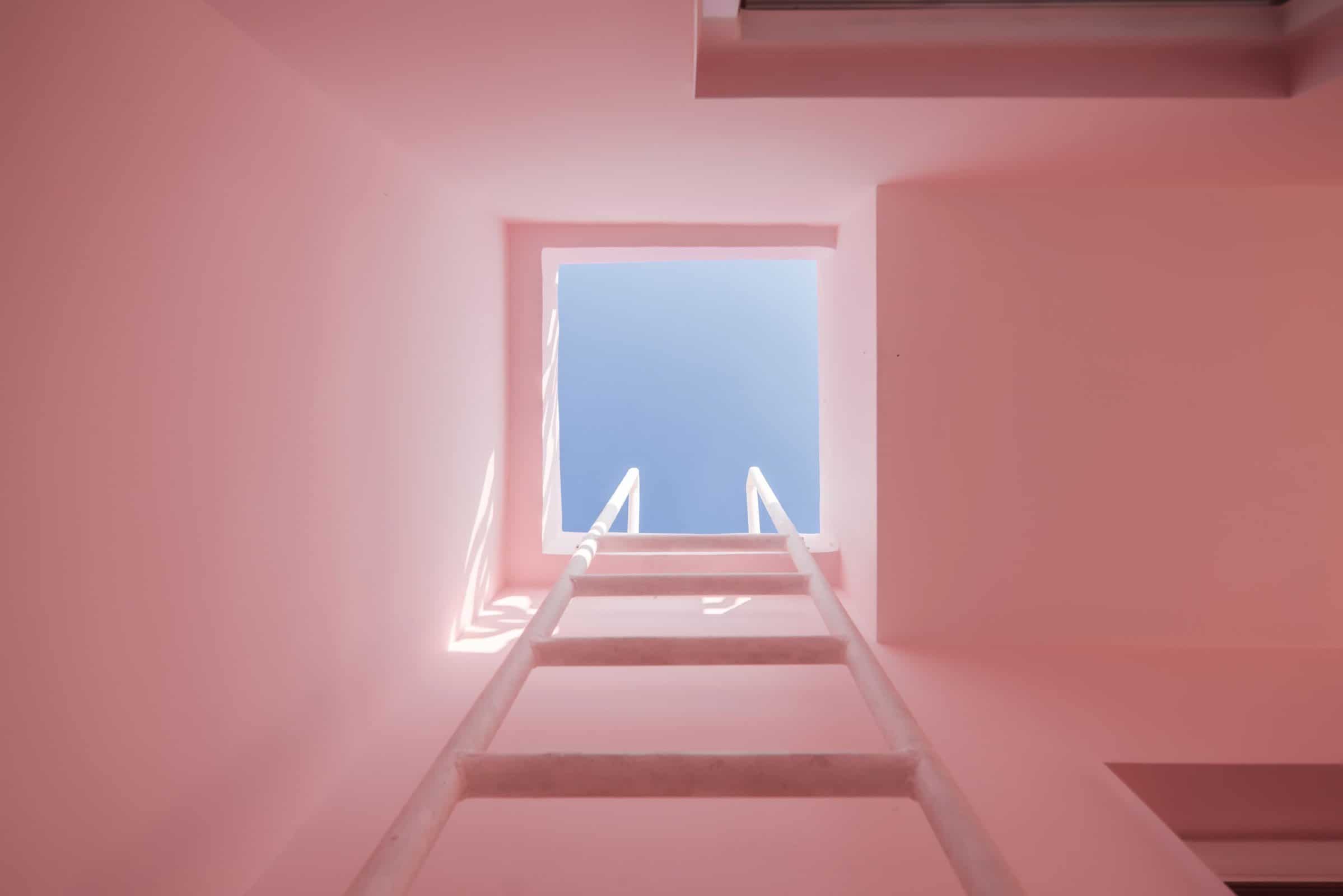
The one-story, a blue building, referred to as “His house,” accommodates three display rooms comprising green walls and blue floors and ceilings, an allusion to Matisse’s palette, each representing a testosterone-laden culinary facet: spirits, treated meat, and barbeque. Aside from their unrefined, street-food sensibility, what ties these themes together is that each relates to an age-old method of food preservation–fermentation, smoking, and healing–that reflects the individual desire of self-preservation.
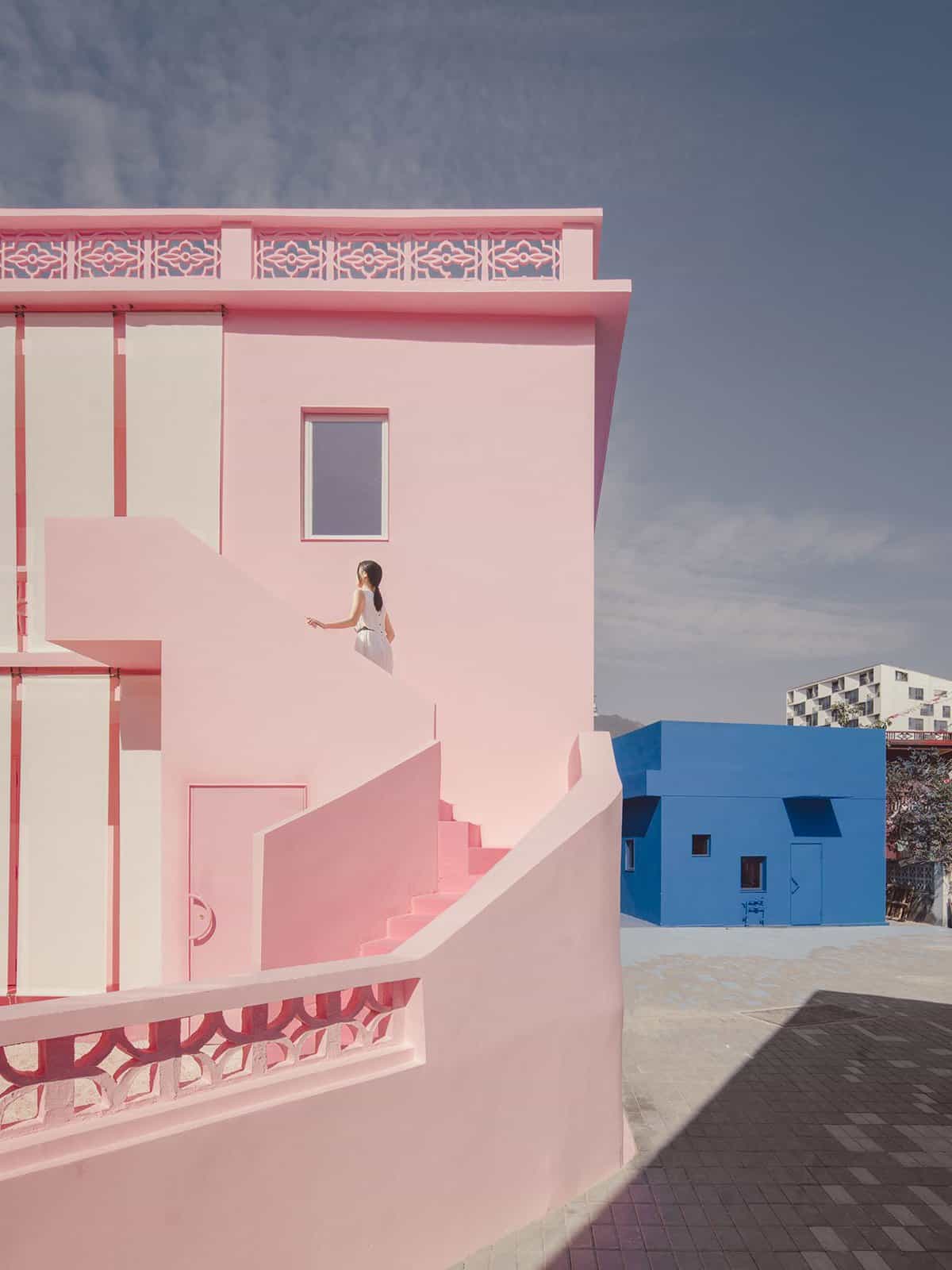
The larger of the rooms feature a pool of beer along with a wall made from wine bottles, while in the next room bacon chunks hang from the ceiling at accurate alignment, graphically summing the architect’s underlying theme of a “Wine Pool Meat Forest.” A fourth, “meditation” room, a white space flooded in daytime although a skylight above, whose floor is covered in salt, a key ingredient for food preservation, has a purity that’s both de-toxifying and cleaning.
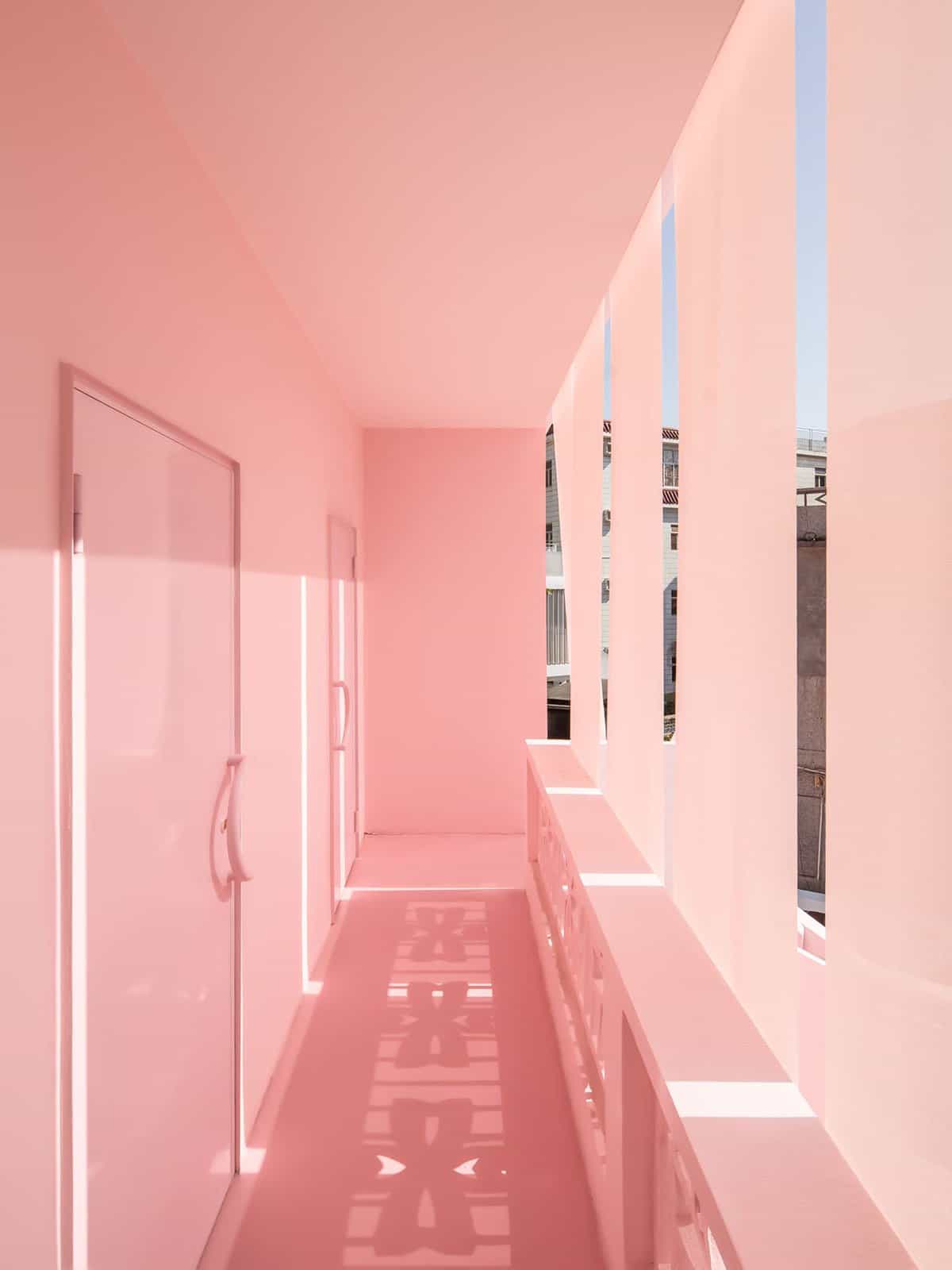
Whereas the interiors of “His house” are peppered by a triangular motif located in the doorway frames and handles that emphasize its manly character, “Her home,” a two-story building of light pink attributes rather a semicircular motif which talks about its femininity. The pink, chic interiors are a labyrinthine set of interconnected rooms spanning two floors and covering topics indicative of a refined diet and a prudent way of life like tea, incense, the art of flower arrangement and vegetarian cuisine, although the roof, which can be accomplished by a vertical ladder, is conceived as a distinctive distance of contemplation. On the front part of the building, vertical bands of the veil-like fabric cover the balconies as an indication of female introspection while a lawn of pink stone salt colorfully defines the boundaries of the property.
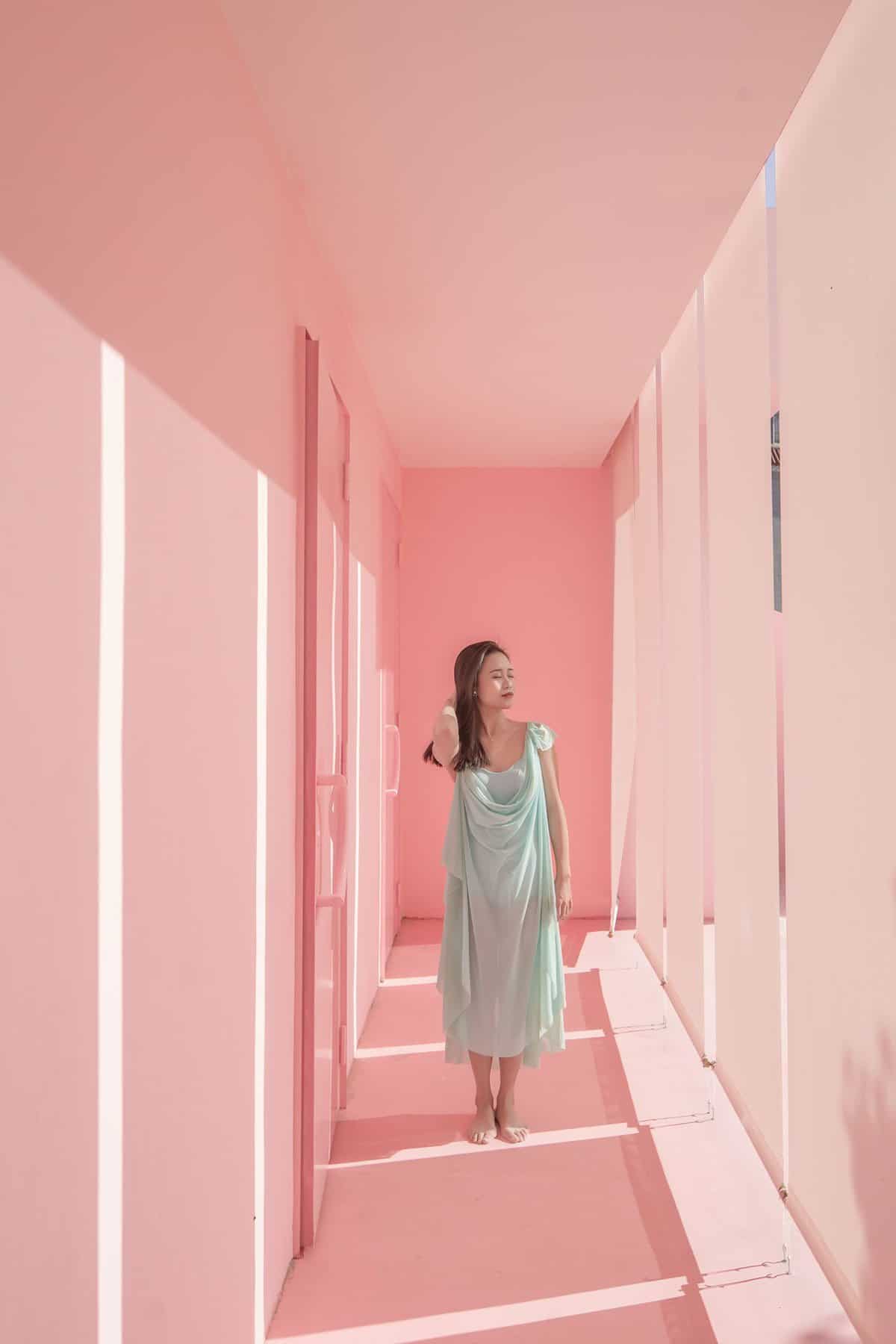
In both structures, the irregular composition and size of windows, which reflects the random way they were constructed and their tenant’s different needs, have been maintained as glistening openings that allow glimpses to the interiors while cheekily complementing the playfulness of the pink and blue cubic volumes. Set against the grimness of the surrounding slum, the abundance of both of these colors stands, above all, for the enduring human desire to live and flourish that throbs underneath the urban squalor.

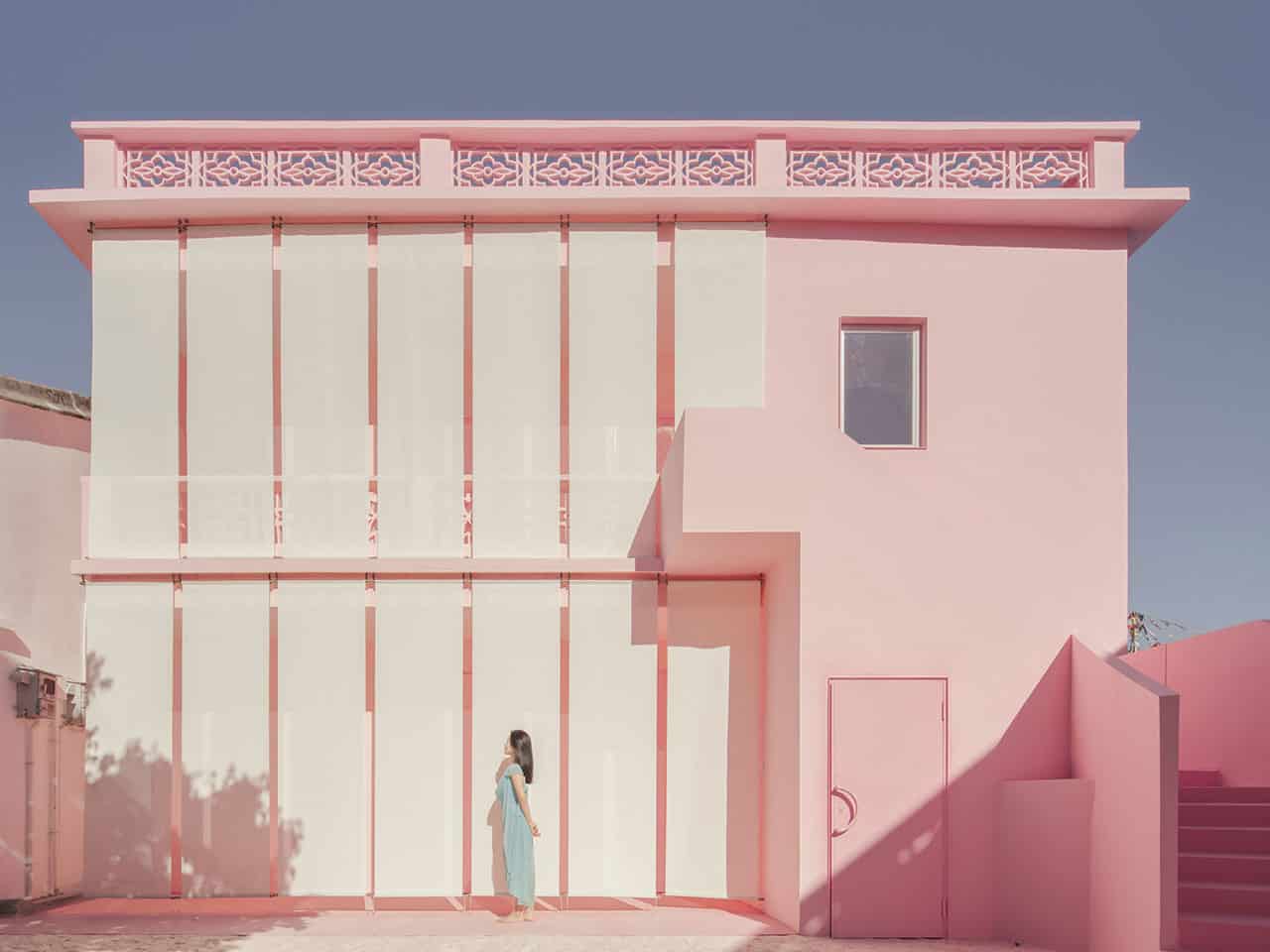
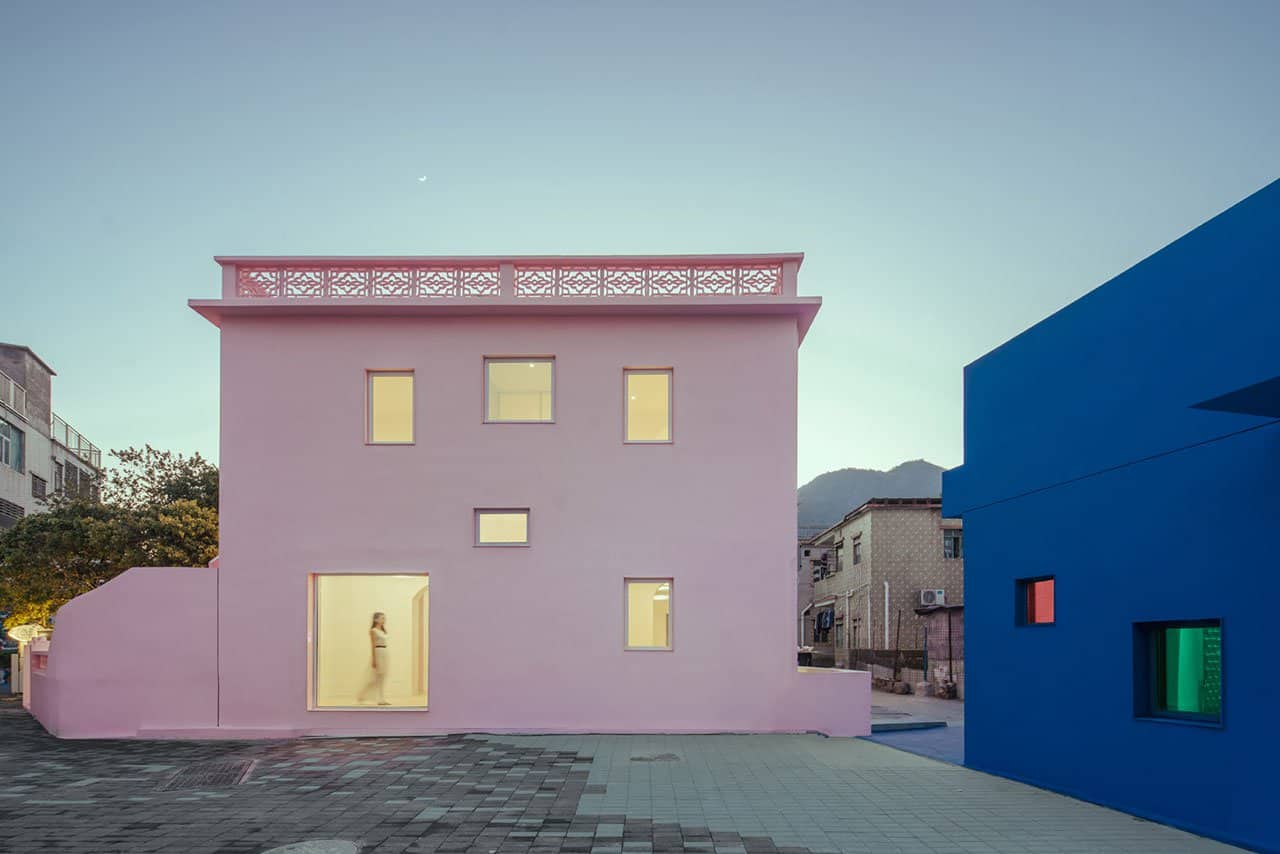

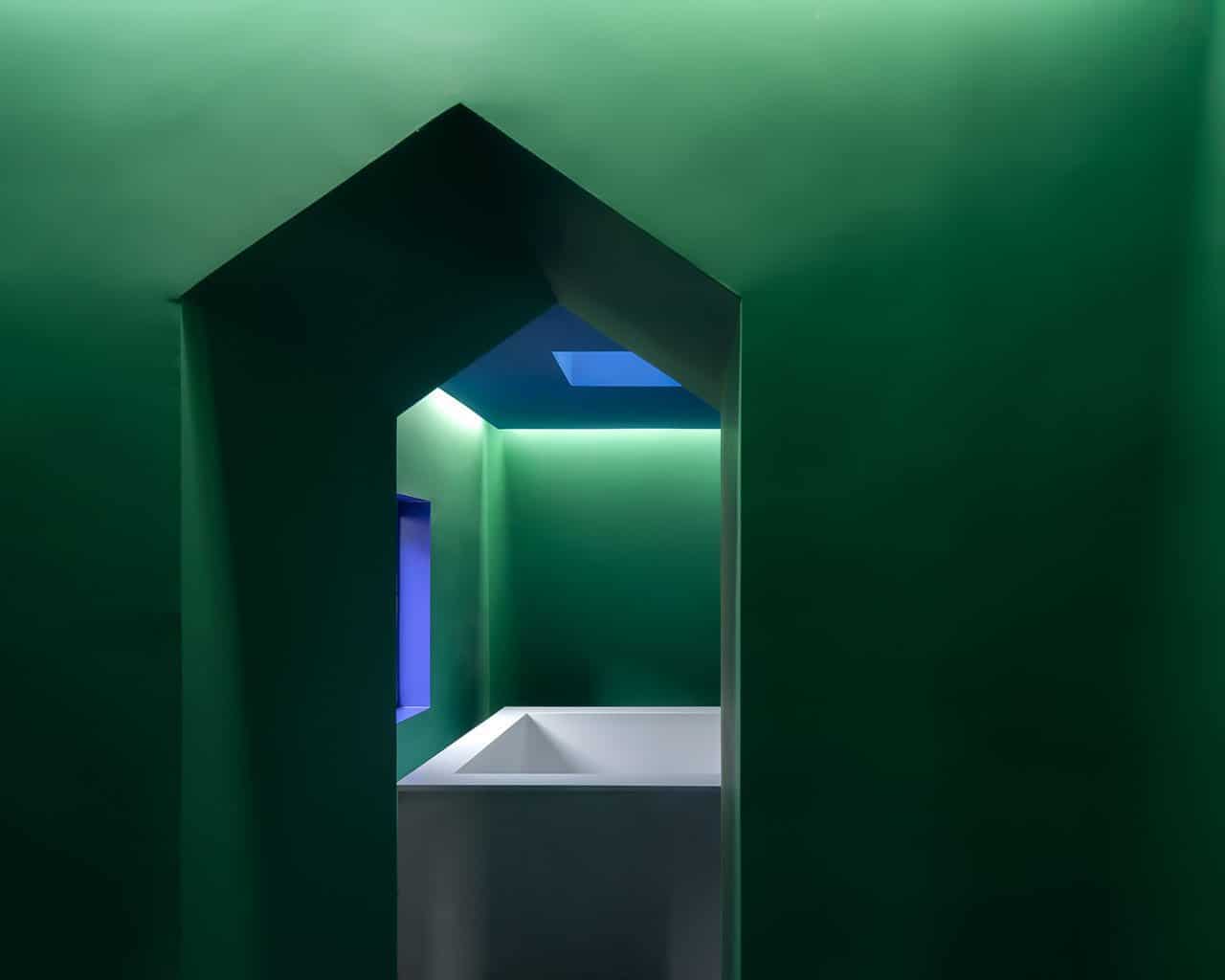
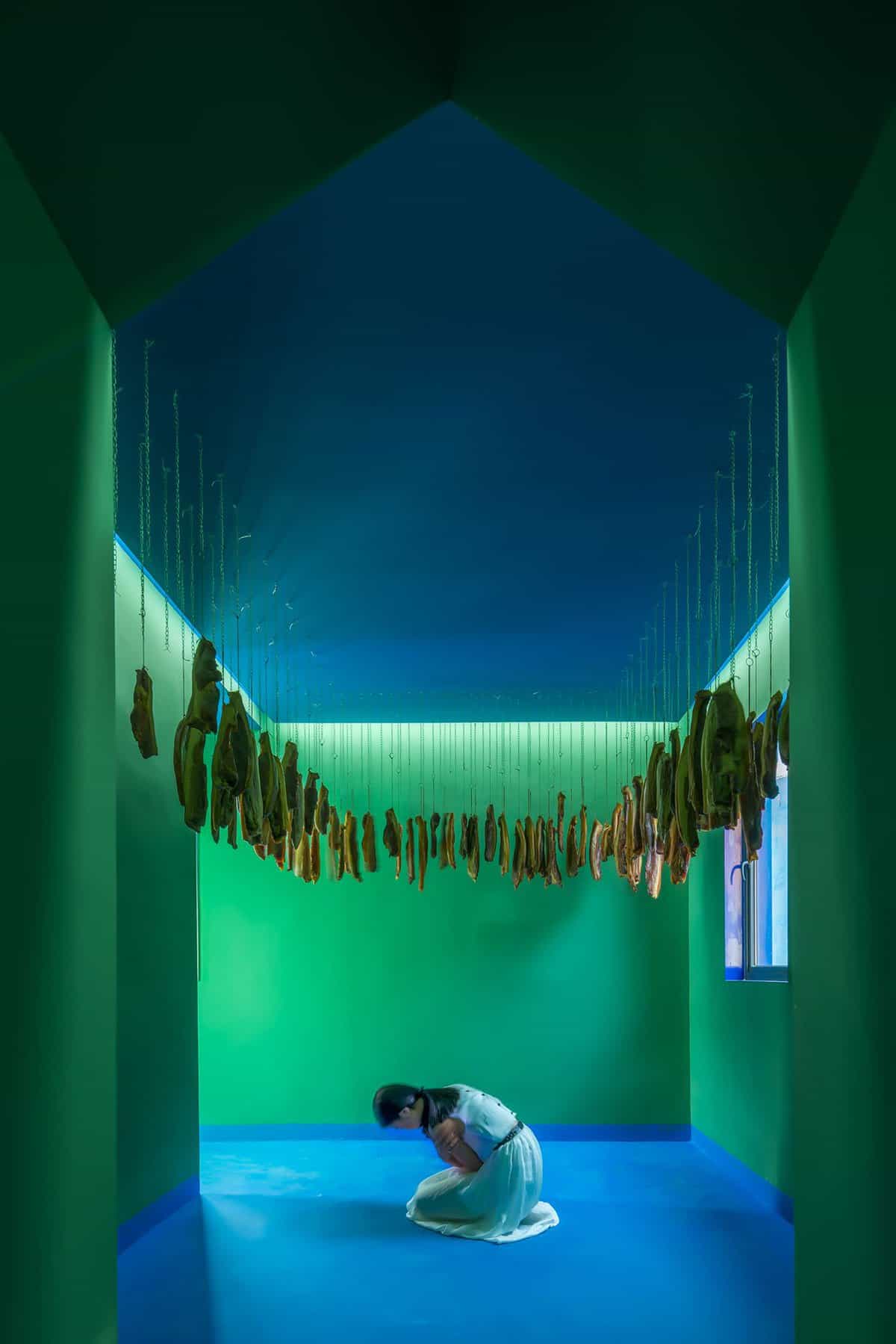
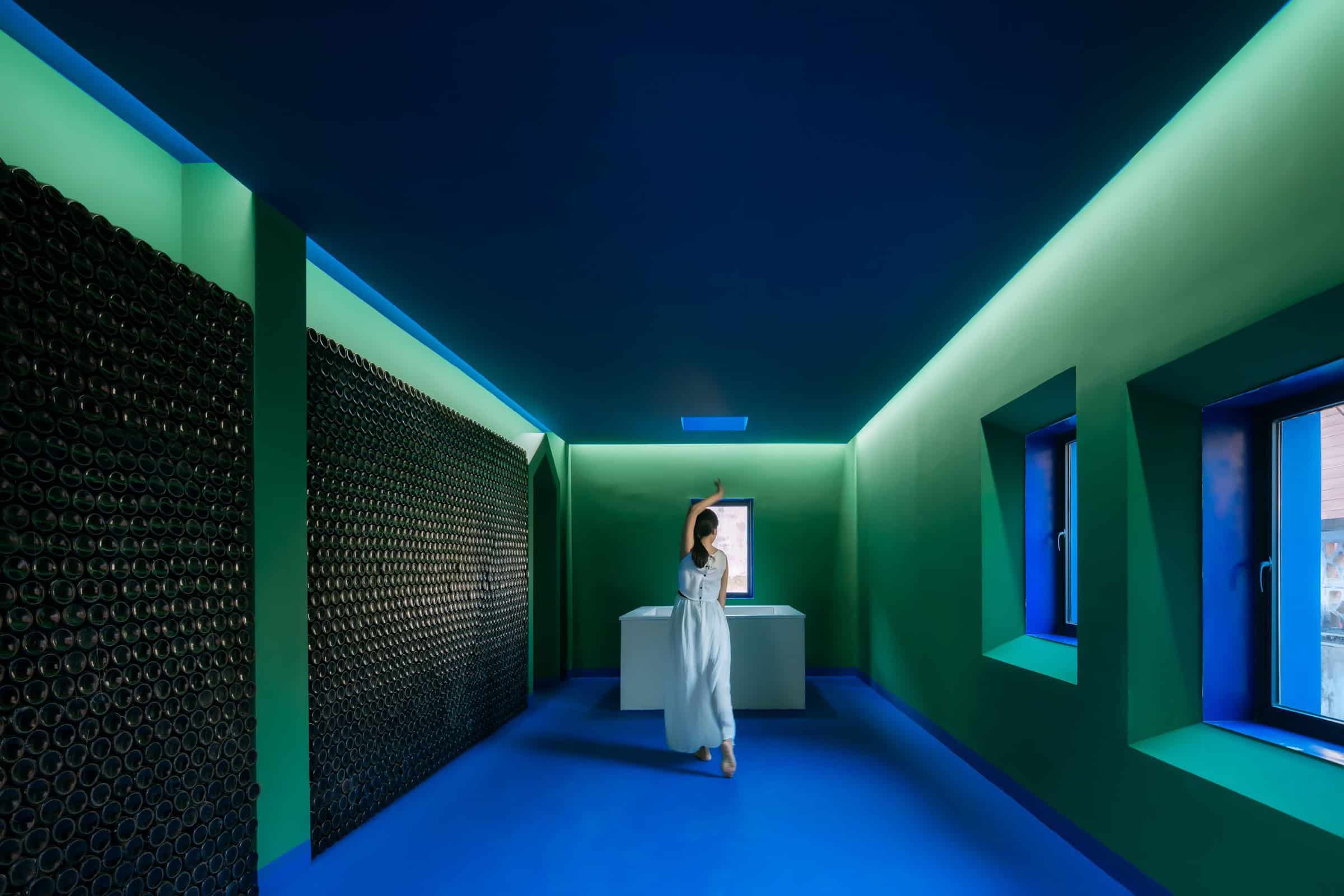
h/t yatzer
